5 Tips for Easy, Safe Boat Trailering
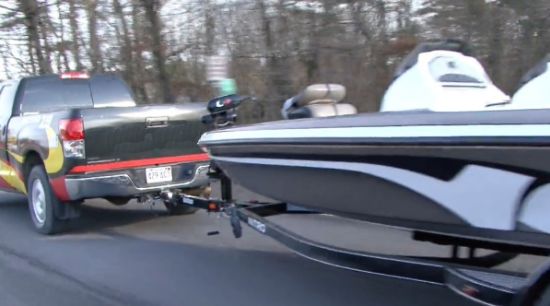
With proper preparation, an appropriate tow vehicle and a reliable trailer, pulling a boat can be safe and easy.
While there is no "official" data available at the current time from the government or insurance companies on the exact number of accidents specifically that occur while a vehicle is pulling a boat, it is widely speculated that the number is on the rise for several reasons:
- Low-cost, poor-quality imported trailers.
- Inadequate maintenance of boat trailers by the owner.
- Inadequate knowledge by boat trailer owners on the proper way to hook up the boat trailer to the vehicle, trailer a boat, launch a boat (backing up a boat trailer) and retrieve a boat.
We can’t help you with the first reason, other than to suggest you buy from a reputable manufacturer. Remember, like most things, the cheapest way is usually not the best way to go.
But we can help you with the other reasons.
Trailering Tips from the experts at BoatTEST.com
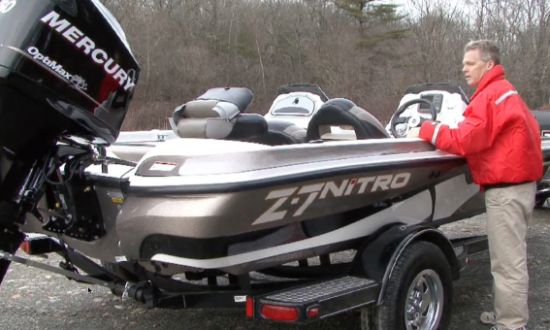
Before leaving the driveway, check that you have everything in the boat securely stowed in the appropriate manner that it cannot leave the boat.
1. Do as much as possible at home before you leave – Store your equipment in the boat; check the wheels, brakes, lights and turn signals. Service and lube your trailer before you leave on a trip. Put the drain plug in the boat. Check your fuel level. Check your oil level. Put the boat key into the boat.
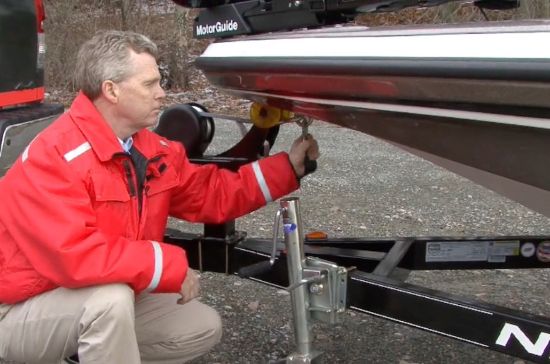
Double check all the safety features on the trailer including the backup bow eye hook strap or chain.
2. After backing up and connecting the trailer to the tow vehicle – Tighten down the trailer to the coupler ball either by turning the trailer hitch or locking it down, depending on which type of trailer hitch you have. It's a good practice at this time to put a master lock through the trailer hitch. This is often forgotten and many a boater have come back to the ramp and found their trailer gone. Therefore, do this immediately after you attach your trailer.
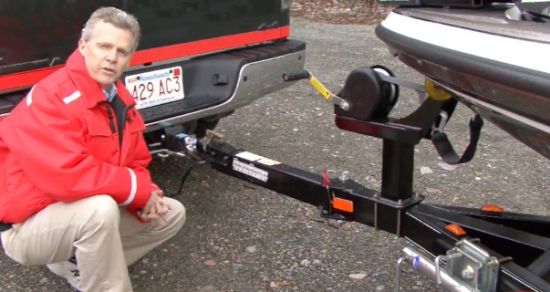
By crossing the trailer’s safety chains, the chains will catch the trailer tongue and keep it from jamming into the ground if the trailer detaches from the hitch.
3. Attach the safety chains from the trailer to the vehicle – making sure to cross them over the another. Make sure the trailer winch is locked down tight on the boat bow eye. Make sure the tie-down straps on the stern are secured to your trailer.
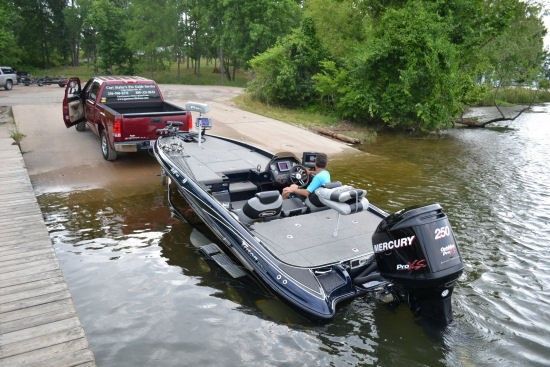
When launching, keep the rear wheels of the tow vehicle out of the water (this will prevent the possibility of the vehicle stalling).
4. Launching – With the trailer midway down into the water, set the vehicle in park and engage the emergency brake. Tie a line to the boat’s bow and unlock the winch so the boat can float free. Secure the bow line to the trailer hitch. Get back into your vehicle and drive forward a bit, then reverse a bit and hit the brakes hard. This will release the boat off the trailer. With the bow line attached to the trailer hitch, you just get the bow line from the hitch, swing the boat around and attach a side dock line to the cleat on the dock.
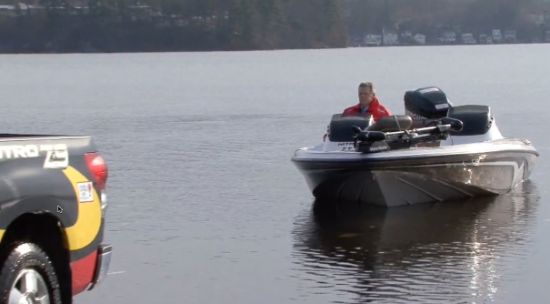
After a long day of boating, putting the boat back on the trailer can be a trial. Don’t let other boaters intimidate you. Wait for your turn at the ramp and staying calm will help.
5. Retrieving – When retrieving the boat, maneuver to the submerged trailer, raising the motor as you go. If driving onto the trailer, engage the motor in a forward motion against the trailer winch, lean over the bow of the boat, and attach the trailer winch to the bow cleat on the boat. Secure it tightly. Turn the motor off, raise or trim it all the way up to the upright position and pull the boat trailer out of the water. Once out of the water, remove the drain plug from the boat.
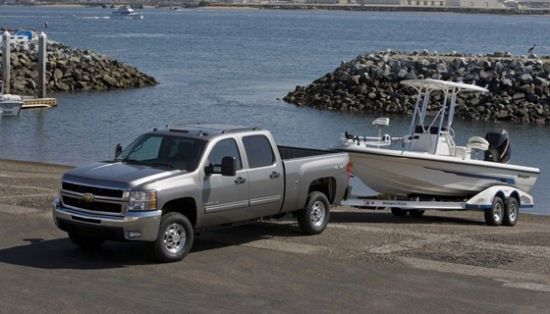
With proper maintenance, correct set-up and not getting in a hurry, you should enjoy the lifestyle of trailer boating for years.
Remember, when choosing to tow a boat, you have several key considerations:
Match the tow weight of the entire package – Make sure the combined weight of the trailer, vessel, gear the on vessel does not exceed the manufacturers recommended towing capacity of the tow vehicle.
Match the trailer ball to the trailer – It doesn’t seem significant, but a 2” trailer tongue hooked up to a 1 7/8” trailer ball will come off!
Properly balance the trailer and vessel package – Have a professional help you with this as it requires setting the bunks.
Let the trailer bearing cool off – When arriving at the ramp, give the bearings time to cool off before you launch.
Keep a watchful eye on the trailer as you drive – If it is “fishtailing”, wobbling or acting funny, get to the emergency lane and stop.